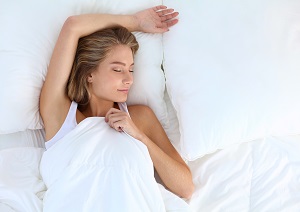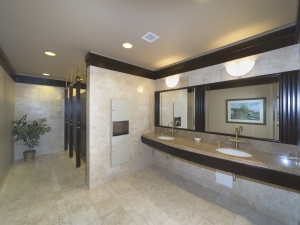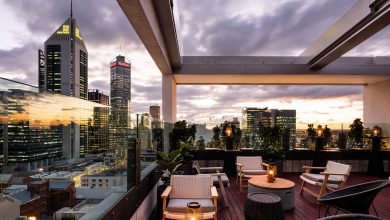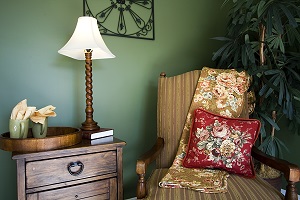
In bed with sustainable luxury
Layers of crisp, clean sheets; sumptuous, soft, fluffy pillows; plush, absorbent towels… Generally, hotels do bedding and linen really well!
With roughly a third of our life spent in bed (far more in hotel-time as there is nothing more luxurious than taking a cheeky, extended nap on holiday), the bed is arguably the most important element of any guest room. While luxury hotels try to impress guests with over-the-top service and luxury amenities, from turbo wifi to a butler for unpacking luggage, it really is the bed that travellers are more concerned about.
According to a 2014 Gallup survey, more than half of guests who stay in the highest-priced properties would pay more for a better bed. Among the respondents, a comfortable bed was most often named the number one feature of a hotel room, more than any other amenity, including Internet access and helpful employees.
Creating the ultimate sleep experience for a guest can make or break your accommodation when it comes to inspiring return visits. As an accommodation provider, you need to weigh up all the elements and find the ‘sweet spot’ between price, comfort and durability for not just a quality bed but quality linens too.
If you can create the ultimate night’s sleep you will experience a spike in guests and ratings. But there is more to a good night’s sleep than simply beds, and there is more to bed linen than meets the eye…
Back in 1999, The Westin (part of Starwood Hotels and Resorts) was the first hotel chain to capitalise on this desire for a luxurious bed experience. They introduced the now well-known Heavenly Bed that consists of 10 white layers of pillows and padding at a time when the idea of an all-white hotel bed was unpopular and hotels favoured easier-to-keep-clean, coloured bedspreads. But after seeing the results of trial testing, Westin designers were convinced there was only one way to go.
 Their designers found that their all-white bed created a ‘halo effect’, giving the impression that the room had been renovated. It had such a huge impact that after the bed came a line of other Heavenly products, including duvets, dog beds, and candles for sale, targeting guests as consumers.
Their designers found that their all-white bed created a ‘halo effect’, giving the impression that the room had been renovated. It had such a huge impact that after the bed came a line of other Heavenly products, including duvets, dog beds, and candles for sale, targeting guests as consumers.
From a visual perspective, the notion is that a white bed is special: it hints at luxury and a full night’s rest. It wasn’t just Westin that began to offer magnificent beds with clean, white, high-thread-count, quality cotton bed linen as the primary feature in a hotel room. Other hotel brands such as Hilton, Marriott, Hyatt and Swissôtel among others were all quick to redesign their sleep experiences and many now sell their beds, pillows, towels, linen and other amenities directly to guests.
The current industry trend is to add a distinctive touch to the ‘white halo’ effect, adding a splash of colour via accessories to achieve that custom made, unique design. This means that travellers are relaxing in a creative, luxurious hotel bed space. Once inspired, they head straight home to order the accessories and recreate their holiday experience for themselves.
Hotel chains are focusing a significant amount of time and money on improving the comfort and luxuriousness of their hotel beds. But can the hotel sleeping experience truly be replicated?
What makes the perfect hotel linen?
Hotel towels should look fluffy, soft and clean. They need to be highly absorbent and quick to dry. Bathroom towels in a typical home, even fancy ones, pale in comparison.
Why are most hotel towels so good at drying, when other towels are not?
One big reason is that hotels wash their towels in hot water with commercial detergent and no fabric softener.
Fabric softener can really reduce the absorbency of your towels. Cotton gets more absorbent with use and hotel towels are well-used. Towels are most absorbent if they are 100 per cent bleached cotton, washed in very hot water, using a basic, good quality detergent, then tumble-dried on high.
What about environmental responsibility?
The industry has a responsibility to improve sustainability across every aspect of the business and there is the ‘eco-minded guest’ to consider. This is a huge industry trend, so when it comes to sheets, towels and linens what ways can accommodations improve their environmental footprint?
One of the major problems is that hotel linen is washed so frequently. Unfortunately, to get that pristine white linen look, strong detergent and a hot wash is the most effective way. To reduce the washing frequency, most hotels, motels and apartments remind guests to reuse their towels and some hotels even offer bargain eco-stays, where linen only gets changed every third night.
Other hotels have taken a more outside-the-box approach to improving their environmental responsibility. In April, W Hotels Worldwide, part of Starwood Hotels & Resorts Worldwide surprised the industry and partnered with global music artist and entrepreneur will.i.am and the Coca-Cola Company. Their aim? “To shake up the hotel industry, one guestroom at a time.”
The Coca-Cola Company announced: “W Hotels will soon begin re-making their beds with new Ekocycle branded sheets that are made in part with rPET (polyester partially made using recycled plastic). Rolling out into W Hotels in North America first with global properties to follow, each king size sheet set utilises approximately 31 recycled 0.57l plastic bottles.
“The result is bedding that is as luxurious as it is environmentally conscious, ensuring that guests continue to have the same incredibly comfortable sleep they have come to expect from a night in a W Hotel bed. Guests can rest assured that they won’t feel a difference, as the more sustainable sheets are made using the same high quality process as the W brand’s current bedding, with the only difference being the use of recycled polyester instead of new polyester.”
Embedded in their ethos, “waste is only waste if we waste it”, the idea came after will.i.am was inspired to turn waste left behind at a Black Eyed Peas’ gig into recycled sought-after objects and joined forces with the Coca-Cola Company. “I am very excited to bring the Ekocycle movement to W Hotel guests around the world,” said will.i.am. “When it comes to finding partners for the initiative, Coca-Cola and I want to work with those who understand our message: that being more sustainable can be stylish.”
This type of brand mission aims to excite and inspire people. It is certainly innovative and will hopefully inspire other likeminded movements and give hotel guests worldwide the opportunity to experience luxury that is also sustainable.
AMG asked one of Australia’s leading industry suppliers of quality sheets, towels and linen some nagging industry questions on your behalf…
Lawrie Feltham is the director of Mainlinen. He has over 30 years of experience supplying quality linen to hotels.
Mr Feltham said: “There is no substitute for quality. We are proud to be an Australian owned and operated business, dedicated to supplying affordable luxury linen to the hotel industry.”
What are the most important qualities of a hospitality towel?
A towel’s primary purpose is to absorb moisture. There are however some important considerations: the amount of moisture uptake per kilo of cotton and its ability to shed that moisture rapidly. Together these considerations almost determine the cost of maintenance.
A quality towel is determined by the quality of yarn, the GSM or weight per square meter of cotton, the actual weave and machinery use in the manufacturing and the longevity offered.
There is a general order of merit…
Three-star – 480 GSM, 70 x 140, ring spun single loop construction. This is basically a commercial rental or on premises economy performer. It has a 16-month working life or 20 per cent loss of weight.
Four-star – between 500 to 550 GSM, 70 x 140 to 75 x 150. This is a double loop carded construction, a better grade of towelling that has up to double the life capacity and holds far more moisture.
Five-star plus – 600 to 700 GSM, 70 x 150 to 80 x 180, 100 per cent combed. This offers a similar working life to the four-star, but it is the softest giving the five-star feel and it has the most generous moisture up take.
The cost of maintenance is directly related to actual weight, GMS grams per piece. While wash times per kilo remain similar, the fact is that the more water needed to remove the longer the drying energy required.
Are you aware of any linen trends in hospitality?
Up until quite recently hotels got what they were given by the commercial laundries and on premise laundries all but a few five-star were incapable of servicing better linen. Thankfully, better commercial laundries are now offering better towels at marginally increased costs and better hotels are prepared to pay the extra related costs.
Do you have environmentally friendly towel and sheet options?
On environmentally friendly washing… To maintain hygiene and whiteness we need heat and chemicals. Traditionally, this has made the laundry process quite eco-unfriendly.
However, with the introduction of far more efficient laundry equipment there have been great leaps forward. For instance, water usage dropping from 11 litres per kilo to three litres per kilo and the recapturing and reuse of semi-hot water that has considerable eco-friendly implications. The environment is the big winner.
On recycled sheeting… Let’s call it microfiber sheeting. I do believe it is the future not just from the recycling perspective but it offers longevity and greatly reduced energy demands with maintenance. Hospitals in the USA have embraced it with great success.
The down side is you cannot mix conventional and microfiber sheeting, the USA discovered a complete changeover was necessary. This worked for stand alone hospitals or hotels or hotel groups that could join in the move adapting.
Sadly, in Australia, laundries as a whole do not have this luxury, we have a long way to go to instigate such a change.
Actually, now you mention it, we must reintroduce marketing of the eco-friendliness of our “guest fresh blanketing”. We introduced it some 10 years ago but it fell on deaf ears at that time. Thanks for the reminder!
On eco-savings with towelling… The improved washing processes of capturing, reusing and heat-salvaging water as mentioned above should also be mentioned.

AccomNews is not affiliated with any government agency, body or political party. We are an independently owned, family-operated magazine.







